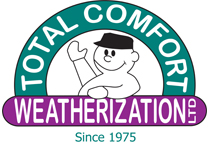Effort is result of SB 1536 that supports at-risk individuals; agency also offers tips for avoiding heat-related illness, reminder about worker protection rules
PORTLAND, Ore. — Oregon Health Authority (OHA) has stepped up distribution of air conditioning units to individuals most at risk for heat-related illness, while also offering tips for staying cool during extreme-heat conditions.
In addition, the agency is reminding Oregon employers of a rule that requires them to take steps to keep workers safe against the dangers of high heat. Such steps must be taken when the temperature equals or exceeds 80 degrees.
The National Weather Service is forecasting increasing temperatures through the week. They’re expected to get above 100 degrees in Pendleton, Redmond and the Portland metropolitan area by Tuesday, with Medford reaching 108 degrees. Temperatures are expected to stay above 100 in all parts of the state through at least Friday.
The program offering air conditioning units to vulnerable Oregonians, including older adults, homebound individuals and those with medical conditions exacerbated by high-heat events, was created following passage of Senate Bill 1536 during the 2022 legislative session. The bill allocated $5 million to purchase air conditioners for high-risk Oregonians who are eligible to receive medical assistance through OHA, Oregon Department of Human Services (ODHS) or Medicare, or have received any of these services in the past 12 months. The law also allows the units to be installed in homes even if they’re not allowed in homeowner or renter agreements as long as they don’t pose a safety hazard.
Over the weekend, OHA – with coordination and support from ODHS – delivered about 500 AC units with the help of three community-based organizations: Portland Open Bible Church, Rockwood Community Development Corporation and Somali American Council of Oregon. OHA is procuring an estimated 3,000 units this summer and has received about 1,000 to date. OHA will be working with more community-based organizations on distributing AC units in the days to come.
Coordinated Care Organizations (CCOs) can directly purchase AC units and assist with any increased electric bill costs for their enrolled OHP members through their flexible services offerings. Members enrolled in a CCO can call member services to inquire about flexible services.
“Climate change has made extreme heat events the rule, not the exception, during Oregon’s summer months,” said OHA Director Patrick Allen. “These air conditioning units are a necessary step for building resilience to this health threat, particularly for those most vulnerable to heat exhaustion, heat stroke and death.”
Another important step is the development of a new heat rule, adopted in May at the request of Gov. Kate Brown, that protects Oregon workers, including those whose jobs require them to be outside. Oregon Occupational Safety & Health (OSHA) says workers have a right to a safe and healthy workplace, including the right to raise safety or health concerns free from retaliation, and reminds employers of their obligations to protect workers against the dangers of high heat under its heat rule.
The rule addresses access to shade and cool water, preventive cool-down breaks, and prevention plans, information and training. Oregon OSHA offers employers free resources to help them comply with the rule. Those resources include consultation services, technical experts, fact sheets about the heat rule’s key requirements and online training.
If workers who raise safety or health concerns do not believe their concerns are being addressed, they may file a complaint with Oregon OSHA.
Finally, OHA continues to warn Oregonians about the risk of heat stroke and heat exhaustion during extreme heat events. Heat stroke can be deadly, with symptoms that include high body temperature (103 degrees or higher); hot, red, dry or damp skin; headache; dizziness; nausea; and confusion. Heat stroke is considered a medical emergency, and 911 should be called.
Heat exhaustion symptoms include heavy sweating; cold, pale, clammy skin; fast, weak pulse; tiredness or weakness; nausea or vomiting; muscle cramps; dizziness; headache; and fainting. People experiencing heat exhaustion should be moved to a cool place and given a cool bath, wet cloths to place on their body, and water to sip. Seek medical help if symptoms worsen or last more than an hour.
OHA offers the following tips for staying safe and healthy during extreme heat conditions:
- Stay cool
- Stay in air-conditioned places when temperatures are high, if possible. To find cooling centers in Oregon, call 211 or visit https://www.211info.org/get-help/housing-shelter/extreme-heat-cooling-centers/?utm_medium=email&utm_source=govdelivery
- Avoid exposure to the sun from 10 a.m. to 4 p.m., when UV rays are strongest. Try to schedule activities in the morning and evening.
- Open windows to allow fresh air to circulate, especially during morning and evening hours, and close shades on west-facing windows during the afternoon hours.
- Use portable electric fans to exhaust hot air from rooms or draw in cooler air.
- Wear loose-fitting clothing to keep cool and protect your skin from the sun.
- Use cool compresses, such as a towel soaked in cold water, misting, and cool showers and baths.
- Avoid hot foods and heavy meals; they add heat to the body.
- Never leave infants or children in a parked car. Nor should pets be left in parked cars—they can suffer heat-related illness, too.
- Dress infants and children in loose, lightweight, light-colored clothing.
- Use sunscreen with at least SPF 15 when going outside.
- Stay hydrated
- Regardless of your level of activity, drink plenty of fluids, even if you are not thirsty and especially when working outside.
- Avoid alcohol or liquids containing large amounts of sugar.
- Stay informed
- Keep up to date on the temperature and heat index when planning your activities so you can find ways to stay cool and hydrated. The heat index measures how hot it feels outside when factoring in humidity with the actual air temperature. Visit the National Weather Service’s Watches, Warnings or Advisories for Oregon page or the Centers for Disease Control and Prevention’s Heat & Health Tracker for the latest.
- Learn how to prevent, recognize and treat heat-related illnesses. Know the warning signs of heat stroke, heat exhaustion, heat cramps, sunburn and heat rash, and how to treat and prevent them.
People with a chronic medical condition such as heart disease, high blood pressure, diabetes, cancer or kidney disease may be less likely to sense and respond to changes in temperature. Also, they may be taking medications that can worsen the impact of extreme heat. People in this category should be closely monitored to make sure they’re drinking enough water, have access to air conditioning and know how to keep cool.
Those who exercise in extreme heat or work outdoors are more likely to become dehydrated and get heat-related illness and should pay particular attention to staying as cool and hydrated as possible.
For more information, visit:
- Preventing Heat-related Illnesses (OHA): https://www.oregon.gov/oha/ph/Preparedness/Prepare/Pages/PrepareForExtremeHeat.aspx
- Extreme Heat (CDC): https://www.cdc.gov/disasters/extremeheat/index.html
- Warning Signs and Symptoms of Heat-related Illness (CDC): https://www.cdc.gov/disasters/extremeheat/warning.html
Understanding Heat Advisories (OHA): https://www.oregon.gov/oha/ph/DiseasesConditions/CommunicableDisease/PreparednessSurveillanceEpidemiology/Documents/understandha.pdf











